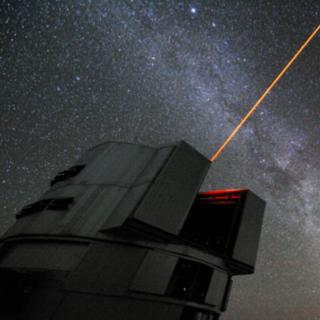Bibcode
Tang, B.; Cohen, Roger E.; Geisler, Doug; Schiavon, Ricardo P.; Majewski, Steven R.; Villanova, Sandro; Carrera, R.; Zamora, O.; Garcia-Hernandez, D. A.; Shetrone, Matthew; Frinchaboy, Peter; Meza, Andres; Fernández-Trincado, J. G.; Muñoz, Ricardo R.; Lin, Chien-Cheng; Lane, Richard R.; Nitschelm, Christian; Pan, Kaike; Bizyaev, Dmitry; Oravetz, Daniel; Simmons, Audrey
Referencia bibliográfica
Monthly Notices of the Royal Astronomical Society, Volume 465, Issue 1, p.19-31
Fecha de publicación:
2
2017
Número de citas
45
Número de citas referidas
40
Descripción
Multiple populations revealed in globular clusters (GCs) are important
windows to the formation and evolution of these stellar systems. The
metal-rich GCs in the Galactic bulge are an indispensable part of this
picture, but the high optical extinction in this region has prevented
extensive research. In this work, we use the high-resolution
near-infrared (NIR) spectroscopic data from Apache Point Observatory
Galactic Evolution Experiment (APOGEE) to study the chemical abundances
of NGC 6553, which is one of the most metal-rich bulge GCs. We identify
10 red giants as cluster members using their positions, radial
velocities, iron abundances, and NIR photometry. Our sample stars show a
mean radial velocity of -0.14 ± 5.47 km s-1, and a
mean [Fe/H] of -0.15 ± 0.05. We clearly separate two populations
of stars in C and N in this GC for the first time. NGC 6553 is the most
metal-rich GC where the multiple stellar population phenomenon is found
until now. Substantial chemical variations are also found in Na, O, and
Al. However, the two populations show similar Si, Ca, and iron-peak
element abundances. Therefore, we infer that the CNO, NeNa, and MgAl
cycles have been activated, but the MgAl cycle is too weak to show its
effect on Mg. Type Ia and Type II supernovae do not seem to have
significantly polluted the second generation stars. Comparing with other
GC studies, NGC 6553 shows similar chemical variations as other
relatively metal-rich GCs. We also confront current GC formation
theories with our results, and suggest possible avenues for improvement
in the models.
Proyectos relacionados

Evolución Galáctica en el Grupo Local
La formación y evolución de galaxias es un problema fundamental en Astrofísica. Su estudio requiere “viajar atrás en el tiempo”, para lo cual hay dos enfoques complementarios. El mas extendido consiste en analizar las propiedades de las galaxias a diferentes distancias cosmológicas. Nuestro equipo se concentra en el otro enfoque, denominado
Emma
Fernández Alvar

Nucleosíntesis y procesos moleculares en los últimos estados de la evolución estelar
Las estrellas de masa baja e intermedia (M < 8 masas solares, Ms) representan la mayoría de estrellas en el Cosmos y terminan sus vidas en la Rama Asintótica de las Gigantes (AGB) - justo antes de formar Nebulosas Planetarias (NPs) - cuando experimentan procesos nucleosintéticos y moleculares complejos. Las estrellas AGB son importantes
Domingo Aníbal
García Hernández